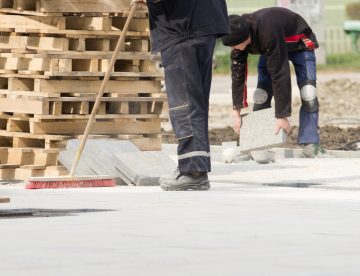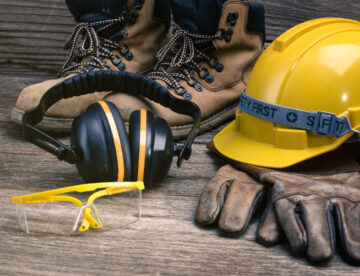
One of our team just came back from an overnight trip full of praise for the hotel they stayed in and its management.
Not only was this because the hotel was great but also because of an email the manager had sent within minutes of them checking in, which explained the high standards they wanted to achieve and what guests should do if anything falls short of that. Read our blog for more about how we think this type of excellent customer care could be applied to our work.

Housebuilders are applauding a report by the Competition and Markets Authority (CMA) that pins the blame for the UK’s housing shortage on the country’s planning system, not on construction companies.
A few weeks ago, the CMA released the final results of its year-long investigation into the housebuilding market. While the initial media focus was on potential collusion among eight major builders, the industry’s deeper interest lies in the report’s findings on planning. Read on to find out more.

Having just returned from a business trip in Thailand, our Managing Director, Ekrem Mahmutaj, is currently full of tales about the places he visited and the people he met.
A strong believer in the philosophy that travel opens up your mind, he’s also been using this trip to demonstrate how travel can actually offer huge benefits for business people. In a slight detour from our normal topics, why not read this week’s blog to see what you could be learning by taking a voyage.

While cleaning up might seem like a secondary concern on a bustling construction site, taking the time to remove scrap materials, dispose of debris properly and store tools securely is crucial. These practices aren’t just about keeping things tidy; they’re essential for preventing accidents, injuries and environmental hazards.
In many cases, incidents involving slips, trips and falls could have been prevented if the site had simply followed better housekeeping practices. Take note of some top tips in this week’s blog.

We’re living in a time when many of our roads, bridges and buildings are getting old and showing signs of wear. It’s like they’re all getting sick at the same time, making it impossible for inspectors to keep up with the job of checking out every crack, creak or crumble. This is a big problem, because if problems are not caught early, they can deteriorate and even lead to dangerous failures.
Here’s where some clever minds at Drexel University in the US come in. Read this week’s blog to find out more about how they’ve developed a system that uses robots and artificial intelligence (AI) to help with the inspections.

Last week, Sheriff Construction was delighted to be presented with a trophy as the winner of the January 2024 IKO Contractor Recognition Award for our roofing projects at the former Ford HQ in Brentwood and Epping Gate.
This is the second time Sheriff has been recognised by IKO, having been ‘Highly Commended’ in relation to our roofing works in Charlton back in 2021. Find out more in this week’s blog.

Toolbox Talks have long been a staple part of a construction team’s day, but are they truly effective? Are your crew members simply going through the motions or are they actively listening, learning and improving?
In this week’s blog, we’re sharing five simple techniques you can use to boost the engagement, understanding and impact of your next Toolbox Talk, thereby driving safer and more skillful work

New rules that came into play this week mean that developers in England now have to deliver 10% Biodiversity Net Gain when building new housing, industrial or commercial developments.
This makes England the first country in the world to make Biodiversity Net Gain a legal requirement so take a look at this week’s blog to find out more about what this means and how it will be implemented.

The British Safety Industry Federation (BSIF) is warning anyone whose job involved buying personal protective equipment (PPE) and safety products to be vigilant after their latest tests on some key products highlight the widespread availability of substandard and dangerous items.
Between December 2022 and December 2023, the federation examined 123 non-BSIF-registered products, assessing them for performance, adequacy and compliance with standards. Shockingly, only 21% products proved fully compliant, leaving 79% falling short. Worryingly, many of these substandard products are still available and in use. Find out more, including how to avoid buying such products, in this week’s blog.

